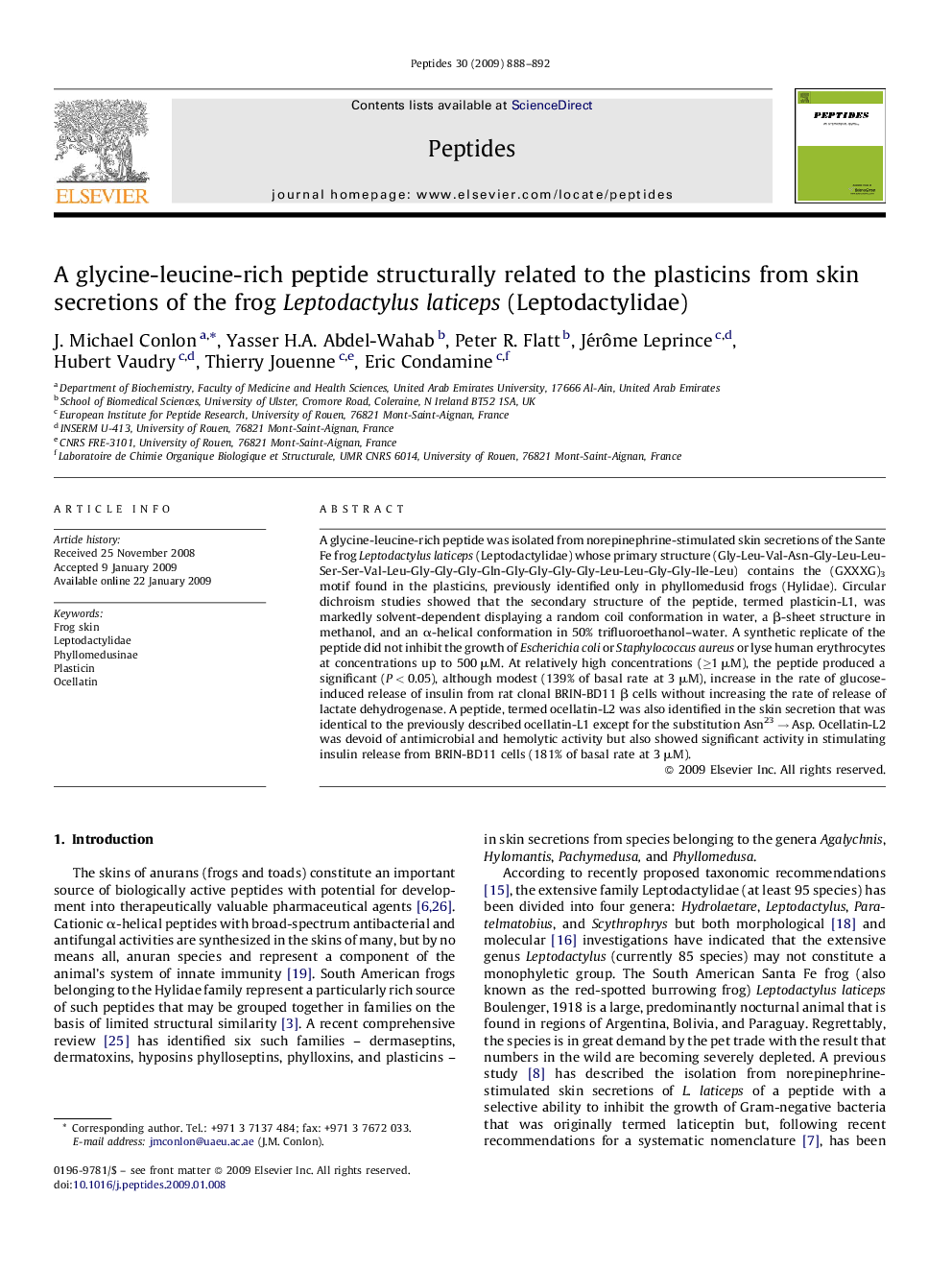| Article ID | Journal | Published Year | Pages | File Type |
|---|---|---|---|---|
| 2007326 | Peptides | 2009 | 5 Pages |
A glycine-leucine-rich peptide was isolated from norepinephrine-stimulated skin secretions of the Sante Fe frog Leptodactylus laticeps (Leptodactylidae) whose primary structure (Gly-Leu-Val-Asn-Gly-Leu-Leu-Ser-Ser-Val-Leu-Gly-Gly-Gly-Gln-Gly-Gly-Gly-Gly-Leu-Leu-Gly-Gly-Ile-Leu) contains the (GXXXG)3 motif found in the plasticins, previously identified only in phyllomedusid frogs (Hylidae). Circular dichroism studies showed that the secondary structure of the peptide, termed plasticin-L1, was markedly solvent-dependent displaying a random coil conformation in water, a β-sheet structure in methanol, and an α-helical conformation in 50% trifluoroethanol–water. A synthetic replicate of the peptide did not inhibit the growth of Escherichia coli or Staphylococcus aureus or lyse human erythrocytes at concentrations up to 500 μM. At relatively high concentrations (≥1 μM), the peptide produced a significant (P < 0.05), although modest (139% of basal rate at 3 μM), increase in the rate of glucose-induced release of insulin from rat clonal BRIN-BD11 β cells without increasing the rate of release of lactate dehydrogenase. A peptide, termed ocellatin-L2 was also identified in the skin secretion that was identical to the previously described ocellatin-L1 except for the substitution Asn23 → Asp. Ocellatin-L2 was devoid of antimicrobial and hemolytic activity but also showed significant activity in stimulating insulin release from BRIN-BD11 cells (181% of basal rate at 3 μM).
